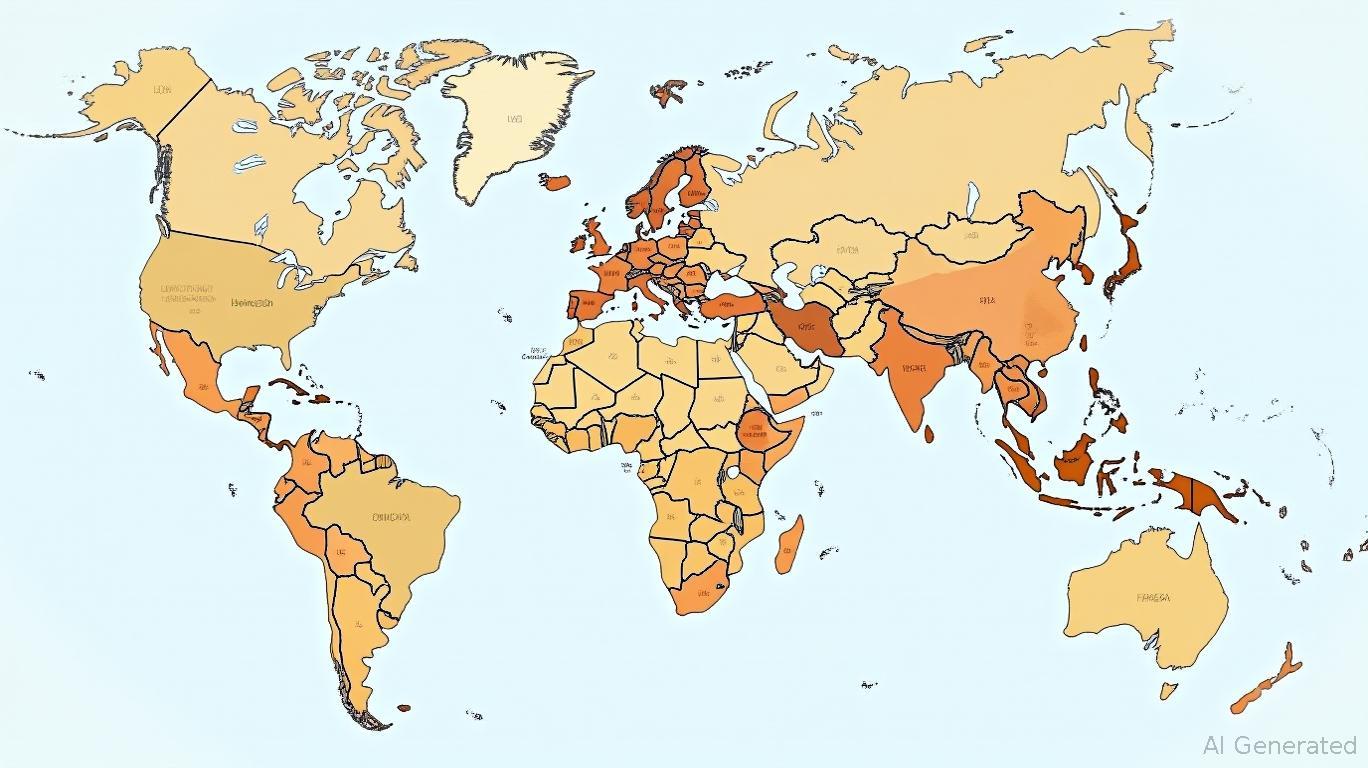Trade Tensions and Tech Sell-Offs: Navigating the China-U.S. Tariff Quagmire
The Dow Jones Industrial Average tumbled 450 points on fears of escalating U.S.-China trade hostilities, with tech giants like Nvidia and Tesla leading the decline. Beneath the surface, a perfect storm of tariff hikes, geopolitical posturing, and structural shifts in global supply chains is reshaping investment landscapes. Here’s how investors should parse the chaos.

The Immediate Catalyst: Tariffs at Triple-Digit Levels
The U.S. imposed a 145% tariff on Chinese imports—a historic high—combining a 125% base tariff and a 20% fentanyl-related levy. This “triple-digit” barrier effectively closes off trade for non-essential goods, per economist Erica York. The move triggered a 3.4% drop in the S&P 500 and a 7% sell-off in Tesla, whose China-sourced batteries and manufacturing exposure are now doubly vulnerable.
Nvidia, a key beneficiary of AI demand, fell 5% as investors priced in higher component costs and delayed semiconductor shipments from Asia. The broader tech sector faces a dilemma: absorb tariff costs (eroding margins) or pass them to consumers (risking demand destruction).
Sector-Specific Fallout: Energy and Tech Bear the Brunt
The energy sector is ground zero for trade tensions. U.S. LNG exports to China collapsed by 70% in Q1 2025, with zero shipments in March—the first such halt since 2019. Asian LNG prices surged 18%, while U.S. gas prices plummeted 9% due to oversupply. This divergence highlights a stark divide: China’s pivot to Qatar and Malaysia (at a 12-15% premium) vs. U.S. exporters losing $3.8 billion in Q1 revenue.
In tech, smartphone manufacturers raced to stockpile parts ahead of tariffs, boosting Q1 shipments by 1.5%. Samsung and Apple hit record sales, but the rally may be short-lived. U.S. tariffs on Chinese goods threaten the $300 billion smartphone supply chain, with Apple’s China-excluded Pro models already losing market share.
Geopolitical Realignment: The New Trade Order
The trade war is accelerating a structural decoupling. China’s “dual circulation” strategy prioritizes domestic consumption and diversification of energy imports, while the U.S. pushes “energy decoupling” via LNG exports to Europe. This shift has global ripple effects:
- Germany: Auto and manufacturing sectors face a 0.1–0.2% GDP hit annually.
- Indonesia: Anticipates a 0.3–0.5% GDP drag, prompting trade policy overhauls.
- ASEAN: Neutral on retaliation but demanding “frank dialogue” to protect trade ties.
Market Volatility and Policy Uncertainty
The 90-day tariff pause announced by the White House briefly buoyed markets—only to trigger a 4% Dow plunge as investors doubted its sustainability. Treasury yields spiked to 4.5%, signaling bond market skepticism about the Fed’s ability to navigate this crisis.
Political fireworks added fuel. Democrats accused the administration of insider trading after stocks surged on Trump’s social media hints. Treasury Secretary Scott Bessent downplayed the rout, citing “certainty” from the tariff pause, while former Secretary Janet Yellen called the policy a “chaotic self-inflicted wound.”
Investment Implications: Where to Look (and Avoid)
- Avoid Tariff-Exposed Tech:
- Tesla (-7%) and Nvidia (-5%) are vulnerable to supply chain disruptions and margin pressures.
- TSLA Total Revenue
Embrace Energy Diversification:
Invest in LNG infrastructure projects in Malaysia (e.g., Sinopec’s $1.2 billion investment) or European gas terminals benefiting from U.S. exports.
Seek Safe Havens in Resilient Sectors:
Consumer staples and healthcare firms with diversified supply chains (e.g., Procter & Gamble, Johnson & Johnson) offer stability.
Monitor Central Bank Responses:
- The Fed’s next moves on interest rates will determine whether the U.S. slides into recession—a 40% probability by year-end, per Goldman Sachs.
Conclusion: The New Reality of Trade Volatility
The 450-point Dow drop is not just a blip—it’s a wake-up call. China’s Q1 GDP growth of 5.4% masks vulnerabilities as U.S. tariffs push 2025 forecasts down to 3.4–4.0%. The trade war’s legacy will be a reshaped global economy: energy flows rerouted, supply chains fragmented, and investors forced to navigate a landscape where tariffs, not just fundamentals, dictate returns.
For now, the data is clear:
- Tech stocks tied to China manufacturing face sustained pressure.
- Energy plays in Asia and Europe offer arbitrage opportunities.
- Geopolitical risk premiums are here to stay.
Investors who ignore the trade war’s structural shifts risk being left behind in a market where every tariff hike is a new chapter in a very long story.
Data sources: National Bureau of Statistics of China, Goldman Sachs, UBS, Reuters.



_23f7f7eb1749627884277.png)





